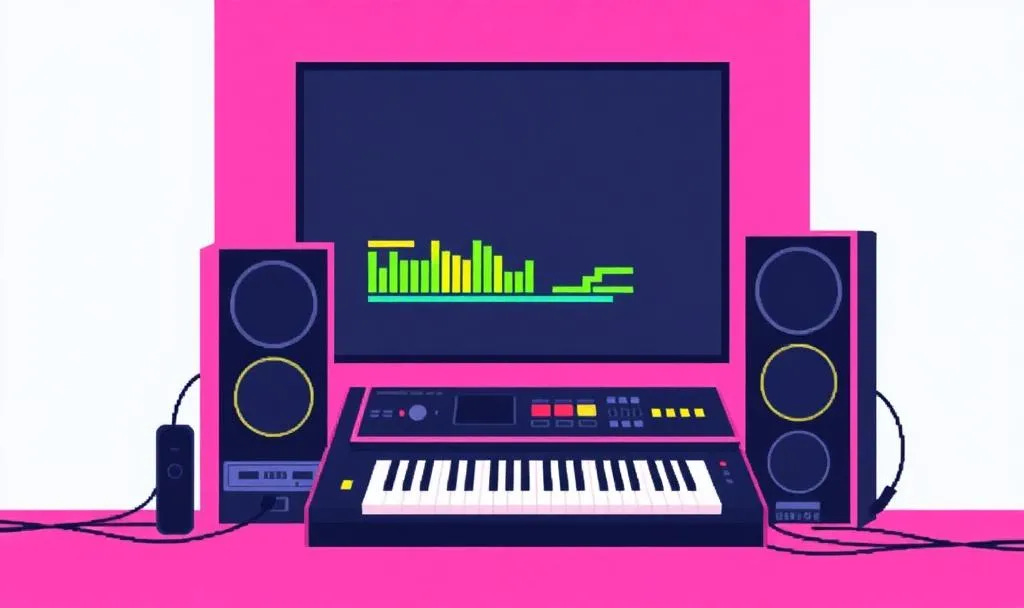This is part of my Pop Music in the ‘80s series.
The Rise of a New Sound
By the early 1980s, pop music was undergoing a transformation away from the disco sounds that permeated the last half of the 1970s. The success of Michael Jackson, Prince, and Madonna had shattered racial and gender barriers while proving that music videos were the future. But alongside these American superstars, a new wave of European artists was poised to dominate the airwaves, with a sound built on synthesizers, drum machines, and sleek, futuristic production. Synth-pop would quickly become one of the defining genres of the decade.
The MTV Effect: A Second British Invasion
MTV launched in 1981 with a limited selection of music videos, many of which came from British and European artists. Unlike many American acts, UK musicians had already embraced the visual medium. The long-running UK music show Top of the Pops had live weekly performances, but when scheduling or other conflicts arose, promotional videos would air in place of live performances. While the production of promotional videos was common in the US, the production quality was far inferior to their UK counterparts. British artists had been conditioned to think of the video in terms of performance and spectacle. As a result, acts like Duran Duran, Depeche Mode, and New Order arrived in the US with fully realized visual identities, tailor-made for the MTV era.
MTV’s early programming heavily favored British artists, simply because they had the best-looking videos. The result? A second British Invasion, this time led by flamboyant, futuristic, and impeccably styled pop stars who brought a distinct sense of drama to their music and visuals.
Duran Duran: The Art of Excess
Few bands embodied the synth-pop explosion better than Duran Duran. With their stylish looks, cinematic music videos, and anthemic pop hooks, they became the perfect MTV-era band. The videos that accompanied songs like “Hungry Like the Wolf,” “Rio,” and “View to a Kill” were veritable mini-movies, blending exotic locations with cutting-edge editing and storytelling. The band’s fusion of new wave, synth-pop, and danceable rock made them global icons and proved that music video wasn’t just a promotional tool—it was an art form in its own right.
Depeche Mode: The Dark Side of Synth-Pop
Where Duran Duran offered sleek excess, Depeche Mode explored the darker, moodier side of electronic music. With hits like “Just Can’t Get Enough” and “People Are People,” they introduced American audiences to a more introspective, industrial-tinged brand of synth-pop. Their music videos, often stark and experimental, stood in contrast to the high-gloss productions of their contemporaries. As the decade progressed, Depeche Mode would venture away from synth-pop and evolve into one of the most influential electronic acts of all time, paving the way for future genres like industrial and techno.
New Order: Dance Music Meets Rock
Emerging from the ashes of post-punk pioneers Joy Division, New Order bridged the gap between alternative rock and dance music. Their 1983 hit “Blue Monday” remains one of the best-selling 12-inch singles of all time. Its groundbreaking fusion of electronic beats, synth layers, and rock energy helped shape the future of dance music. Unlike many of their synth-pop peers, New Order maintained an air of mystery, often letting their music speak louder than their image. But even without the fancy visuals and marketing of Duran Duran, their music innovations helped cement synth-pop as a legitimate artistic movement.
The Lasting Impact of Synth-Pop
By the middle of the decade, the synth-pop sound had become the dominant sound of mainstream pop music. MTV had helped turn stylish, electronic-driven artists into superstars, while the genre’s influence extended beyond pop into rock, R&B, and even hip-hop. The success of synth-pop also paved the way for the dance and electronic revolutions that would come in the late ‘80s and ‘90s, influencing everyone from Pet Shop Boys to house and techno pioneers.
While some of these artists would evolve beyond synth-pop by the end of the decade, their impact was irreversible. The inseparable pairing of sound and visual pioneered by acts like Duran Duran, Depeche Mode, and New Order helped implant pop music into the heart of culture—it was about the experience. At the same time, Hollywood was experiencing a resurgence of popularity with blockbuster films reporting record-setting sales at the box office. Up next we look at the way Hollywood positioned itself to establish a symbiotic relationship with MTV by way of pop songs.

